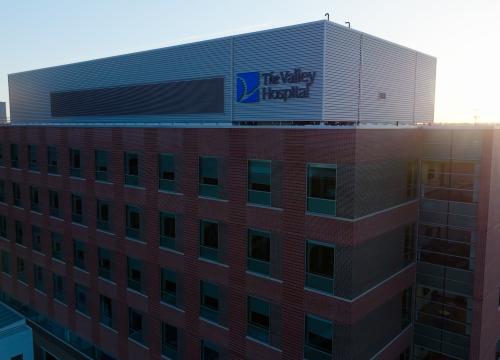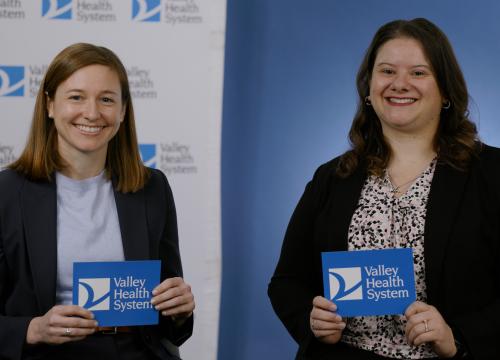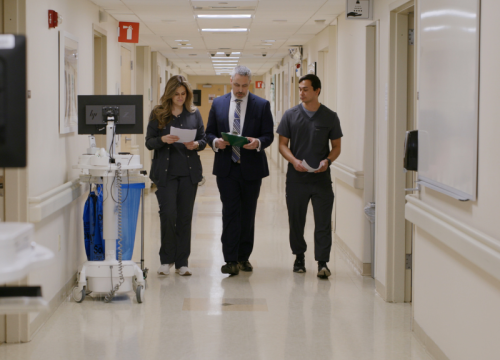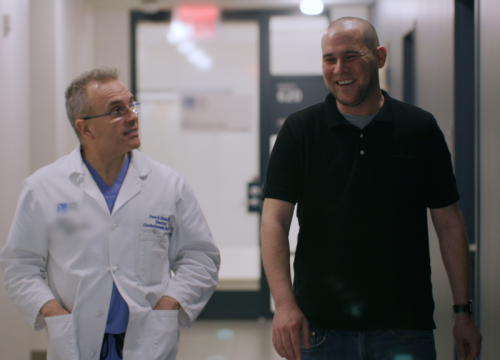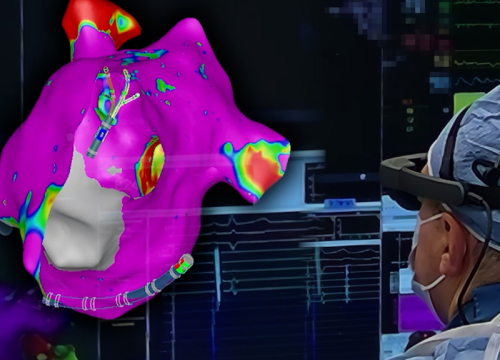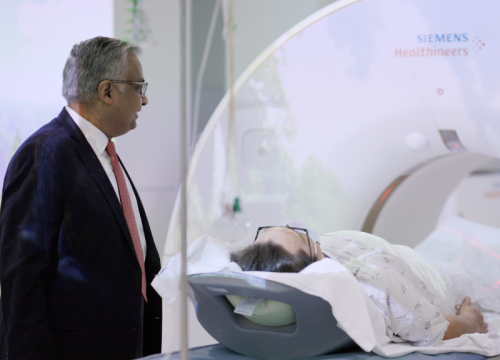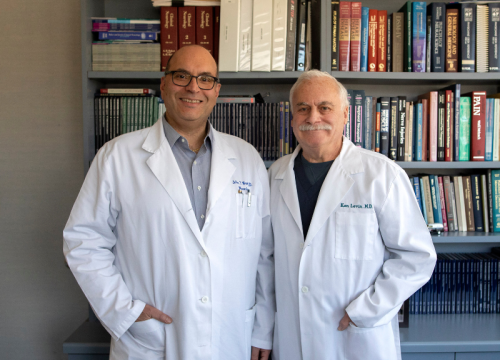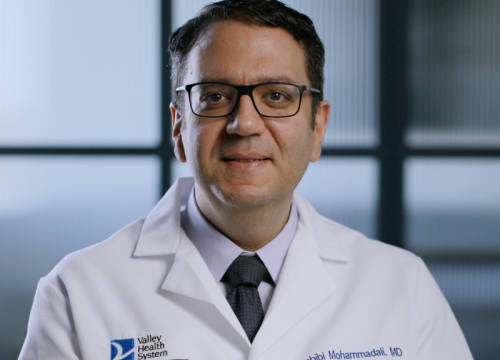In the past, spine surgery required large incisions and long hospital stays. But new technology and techniques have made spine surgeries much less invasive.
Valley’s neurosurgeons use innovative tools (retractors) and advanced visualization systems to help them “see” the spine through small incisions. This allows for less tissue disruption, reduced risk of bleeding, infection, or wound problems. They also use state-of-the-art imaging and monitoring systems to reduce the time under anesthesia, length of surgery, and risk to critical structures. Together, this minimally invasive approach to spine surgery results in faster recovery and less pain for many patients.
At Valley, we offer minimally invasive spine surgery to treat back, neck, and nerve pain and other symptoms caused by a full range of spinal problems. In fact, our neurosurgeons use minimally invasive techniques for most of the spine surgeries we perform at Valley.
WATCH: Neurosurgeon Michael Kaiser, MD, explains how Valley surgeons use minimally invasive techniques to treat spinal conditions.
Am I a Candidate for Minimally Invasive Spine Surgery?
At Valley, our neurosurgeons can treat most spine conditions with minimally invasive surgery. Minimally invasive treatment may be an option if you have:
- Herniated discs, bone spurs, spinal fractures, spinal stenosis or degenerative disc disease (DDD)
- Spinal alignment problems like spondylolisthesis (when a bone in your spine slips out of place)
- Spinal tumors
- Cranial/Spinal defects like Chiari malformation (when part of your brain pushes through an opening in the base of the skull)
These conditions can cause neck pain, back pain, numbness, weakness, and other symptoms that can affect your quality of life. Your neurosurgeon may suggest minimally invasive spine surgery if pain management, physical therapy or steroid injections don’t ease your symptoms.
You may be a candidate for minimally invasive treatment even if you’ve had a previous spinal fusion. While a prior fusion can create challenges, minimally invasive techniques have applications even in these more complex situations.
We also offer traditional spinal surgery for complicated conditions such as scoliosis (curvature of the spine) or if you have several spinal conditions requiring treatment. Even in those cases, though, we use the least invasive methods possible to treat your spine and get you back to your normal routine.
Benefits of Minimally Invasive Spine Surgery
Compared with traditional spine surgery that uses larger incisions, minimally invasive approaches have many benefits, including:
- Decreased muscle trauma without the need to disrupt muscular attachment from the bone
- Less time in the operating room
- Less bleeding and reduced need for blood transfusions
- Less pain and reduced need for strong pain medication after surgery
- Fewer complications after surgery
- Fewer days in the hospital. Many patients can go home the same day of surgery
- Faster recovery
- Smaller scars, fewer wound problems, and better cosmetic results
Types of Minimally Invasive Spine Surgery
Valley’s neurosurgeons specialize in different types of minimally invasive approaches to spine surgery. Your neurosurgeon will work with you to determine which approach is best for you. Depending on your condition, they may recommend a combination of procedures for you.
Some of the minimally invasive spine procedures at Valley include:
- Anterior cervical discectomy and fusion (ACDF) to remove a damaged disc between the vertebrae in the neck to relieve nerve root pressure and alleviate pain, weakness, numbness, and/or tingling
- Laminectomy to remove the back side of a vertebra (spine bone) to reduce pressure on your spinal cord and nerves
- Laminotomy and foraminotomy to widen one or more of the channels between each vertebra to create more space for your nerves
- Microdiscectomy to remove part of a herniated disc that’s pushing on a nerve in the neck or back
- Spinal fusion to stabilize your spine by joining two or more vertebrae with implants and bone grafts
- Chiari decompression to remove a small part of the skull to relieve pressure on the brainstem and spinal cord
- Spine tumor surgery to remove cancerous or noncancerous (benign) tumors in the spine
What to Expect During Your Surgery
Your care team at Valley will ensure that you understand what to expect at every step of your treatment.
Before Your Spine Surgery
Here’s what you can expect before your surgery:
- Before your surgery, if you don’t already have advanced imaging, you’ll come to Valley for an MRI of your spine. Your MRI results will help your neurosurgeon plan the best approach for your surgery.
- Tell your care team about all medicines you take, including over-the-counter medicines, herbs and supplements. They may ask you to stop taking them, but do not stop any medicines unless they tell you to do so.
- If you use nicotine or tobacco, you’ll need to stop several weeks before surgery.
- Do not eat or drink anything after midnight the day before the procedure.
- Arrange for someone to drive you to the hospital on the day of your procedure. You’ll need someone to drive you home after the procedure.
During Your Minimally Invasive Spine Surgery
Here’s what you can expect during surgery:
- At Valley, a nurse will start an intravenous (IV) line with medication to help you relax.
- Your team will include your neurosurgeon, anesthesiologist and other experts. They will perform your surgery in our specialized operating room, which has computer guidance systems and 3D imaging for spine surgery.
- Your anesthesiologist will give you anesthesia through the IV, so you are asleep during the procedure.
- Your surgeon will make small incisions on your back, side or neck to reach your spine. They may use special tools (retractors) that are placed between your muscle fibers to reach your spine. This eliminates the need to cut through muscles or detach them from the bone.
- Most procedures take a few hours, although your surgery may be shorter or longer.
Recovery After Your Surgery
Here’s what you can expect after your minimally invasive spine surgery:
- Most patients who have minimally invasive spine surgery can go home the same day or the following day.
- You’ll recover in the post-anesthesia care unit, Valley’s neurology floor, or inpatient physical therapy unit. Staff in these areas are experts in caring for patients after spine surgery.
- Your doctors and nurses will monitor your recovery and help manage your pain. Your team will also follow a special protocol to minimize use of opiate pain medicines and enhance your recovery.
- As soon as you’re able, your nurse will help you get out of bed and move around your room. Moving helps speed your recovery.
- In select cases, you may need to wear a neck collar or back brace for a few weeks, depending on your surgery.
- You’ll see your neurosurgeon for a follow-up appointment two to four weeks after surgery.
- During your recovery, over-the-counter acetaminophen and ice can help ease pain.
- Avoid bending, lifting, twisting, and strenuous activity for six weeks. Don’t drive until your neurosurgeon says it’s OK.
- You’ll start outpatient physical therapy within a few weeks of your surgery.
- You can expect to return to your usual activities within eight to 12 weeks after surgery.
Call your neurosurgeon if you have:
- Redness, itching, or swelling near your incision
- Fever or chills
- Pain that doesn’t go away with medication
- Tingling or numbness in your arms, hands, legs, or feet
- Frequent need to urinate or loss of bladder control
- Pain or swelling in your legs, which could be a sign of a blood clot
Why Choose Valley for Minimally Invasive Spine Surgery
- Expert second opinions, close to home: Back pain can affect all aspects of your life, especially when you can’t find the right solution. If you’re considering spine surgery, our neurosurgeons can discuss if you’re a candidate for a minimally invasive approach. And if surgery is the best option, our neurosurgeons can perform all types of minimally invasive procedures. This means you don’t have to go into New York City or beyond to get the most advanced minimally invasive spine surgeries.
- Advanced image guidance systems: Minimally invasive surgery requires sophisticated image guidance systems that help surgeons “see” your spine through smaller incisions. Valley neurosurgeons use the latest real-time imaging systems to help them navigate to your spine for surgery. This protects your muscles, nerves, and spinal cord during surgery. Valley also has advanced neuromonitoring systems that help surgeons remove tumors from the spine while protecting healthy tissue.
- Two surgeons in the OR: You’ll likely have two spine surgeons in the operating room with you at Valley. This paired approach decreases operation times and increases safety, allowing for successful surgery.
- Coordinated care with all your specialists: Your neurosurgeon will oversee your care with other specialists at Valley, including your neurologist, orthopedic surgeon, oncologist, and other experts. We’ll also work with pain management and physical medicine experts on a plan to ease your symptoms. Together, we’ll find the right approaches that fit your lifestyle, goals, and preferences.
- Focus on the patient/family experience: To help you prepare for surgery, a neurosurgery nurse practitioner will explain in detail what you can expect in the hospital. On the day of your surgery, patient care navigators will keep your loved ones informed throughout the procedure. And our support continues even after you leave the hospital. We’ll follow up with you at home and arrange for outpatient rehabilitation and home care, so your recovery goes smoothly.



